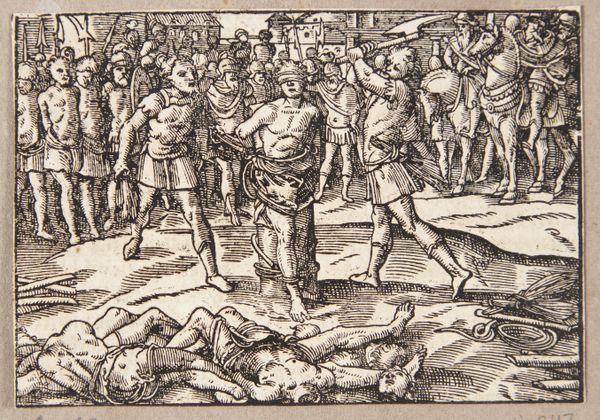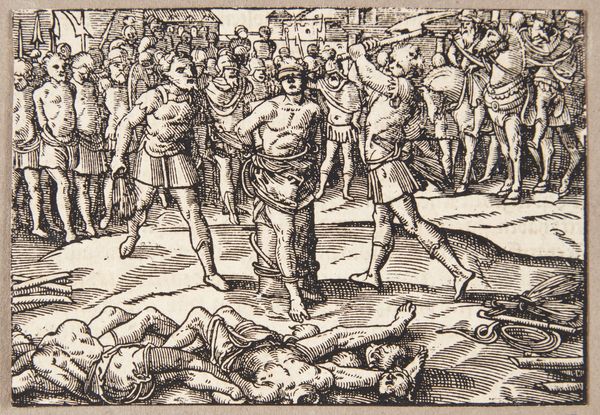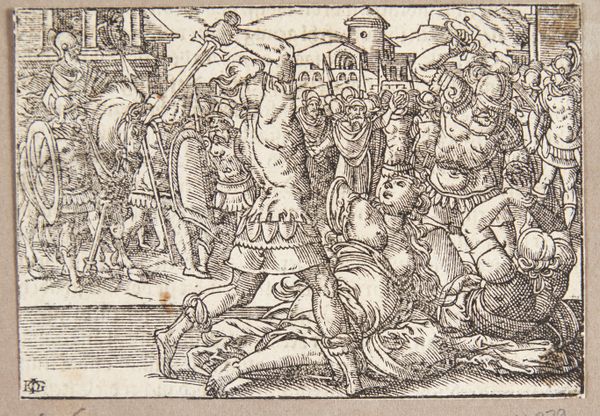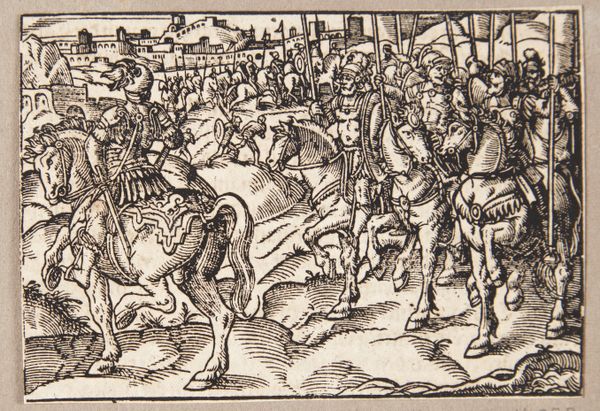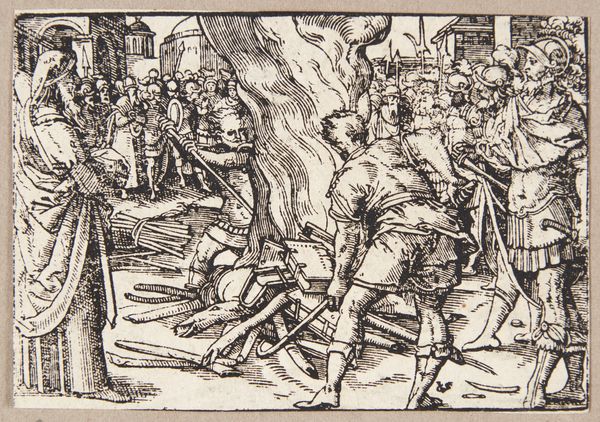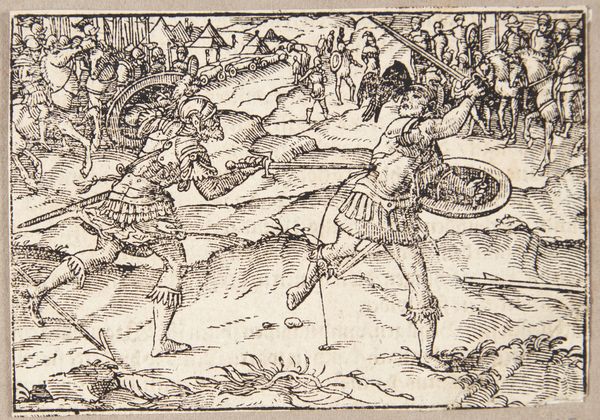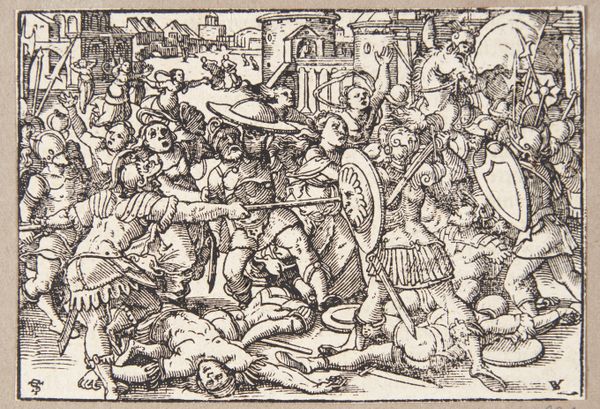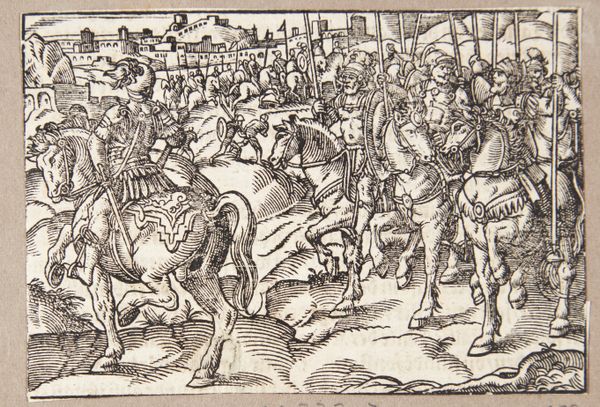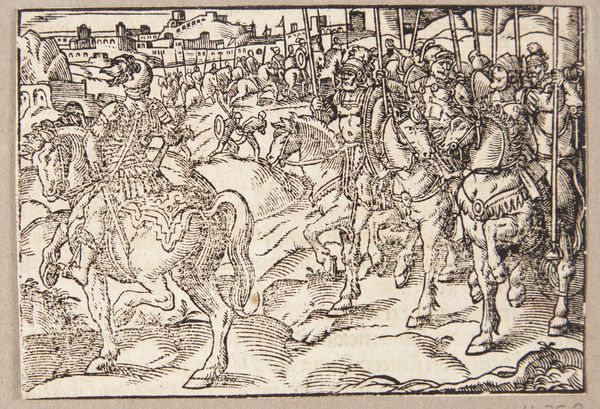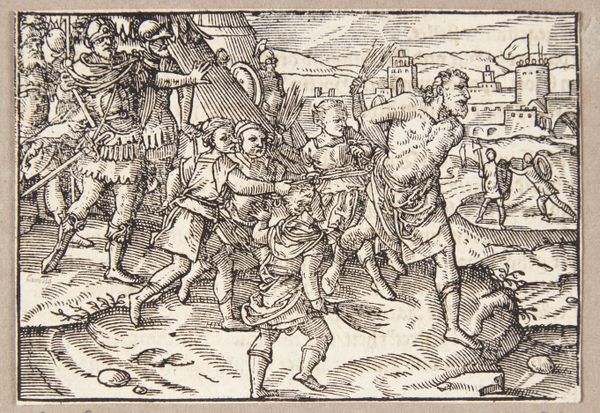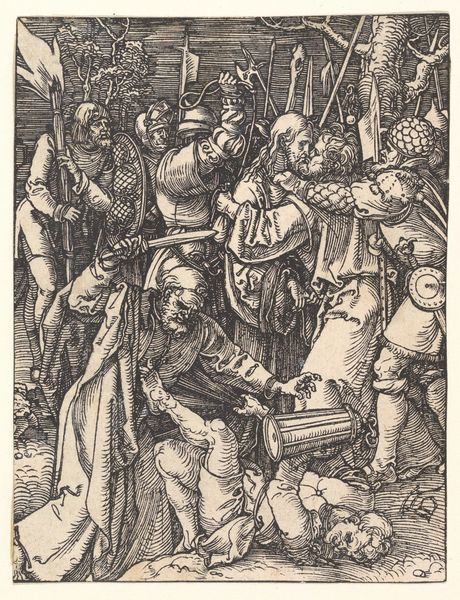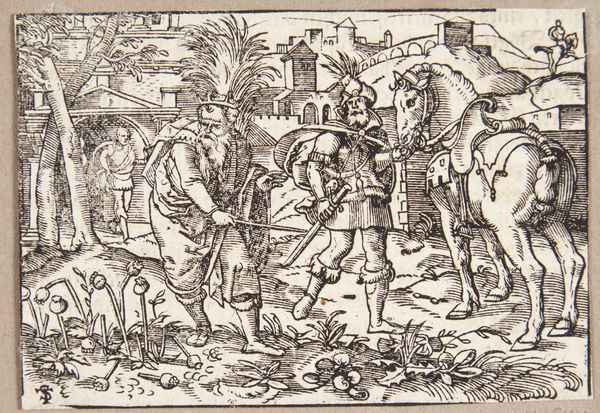
drawing, print, ink, woodcut, engraving
#
drawing
#
medieval
#
narrative-art
# print
#
figuration
#
11_renaissance
#
ink
#
woodcut
#
line
#
pen work
#
history-painting
#
northern-renaissance
#
engraving
Dimensions: 75 mm (height) x 105 mm (width) (bladmaal)
Tobias Stimmer made this print of the beheading of Brutus' son in the late 16th century. It depicts a story from ancient Rome, of a leader who sentenced his own sons to death for betraying the republic. The image creates meaning through the stark drama of the execution, the dense crowd of onlookers, and the contrast between order and chaos. Stimmer was Swiss, and this print comes from a time when many European artists were fascinated by classical history and civic virtue. This was an era of religious wars and challenges to authority, and the story of Brutus would have resonated with those political tensions. Was it right to sacrifice family for the sake of the state? To understand this print better, we can look at contemporary books, pamphlets, and other images that debated the limits of political power. Ultimately, the meaning of art depends on its social and institutional context.
Comments
No comments
Be the first to comment and join the conversation on the ultimate creative platform.
